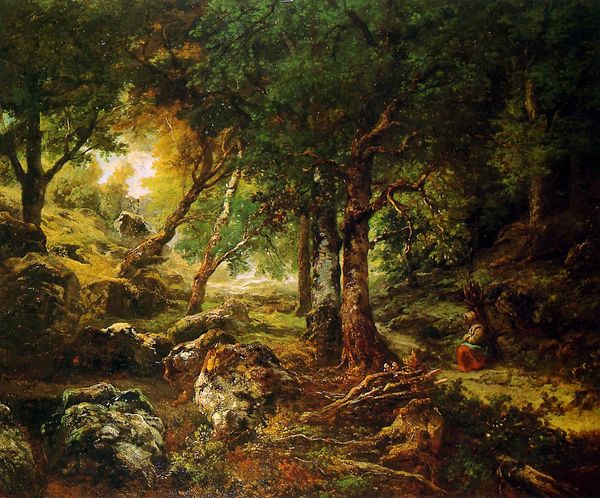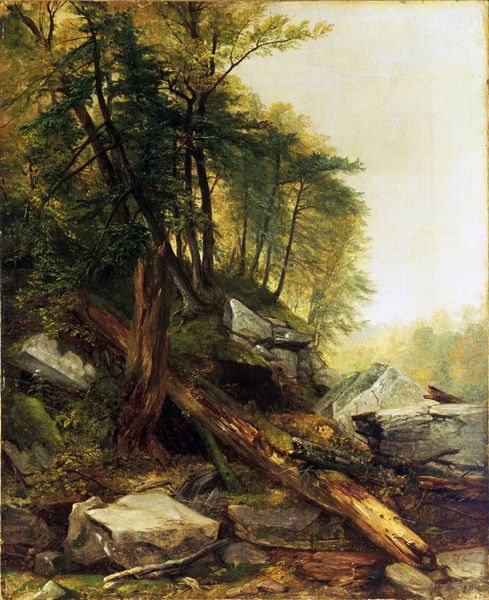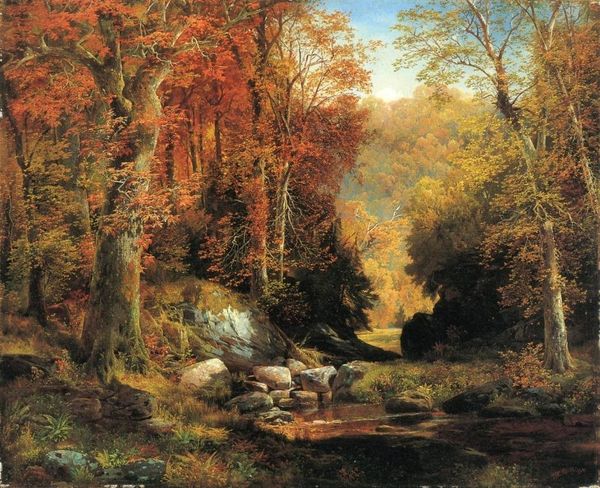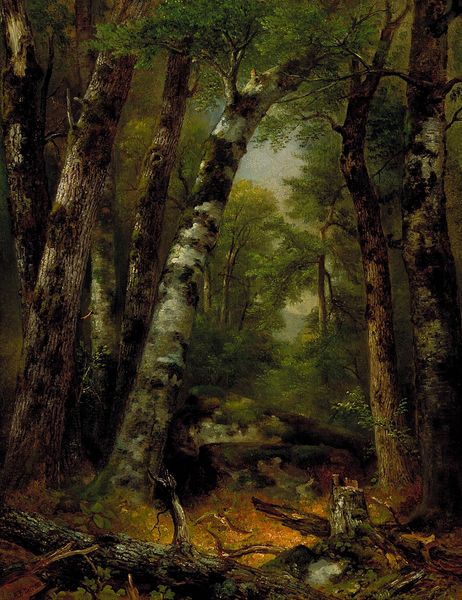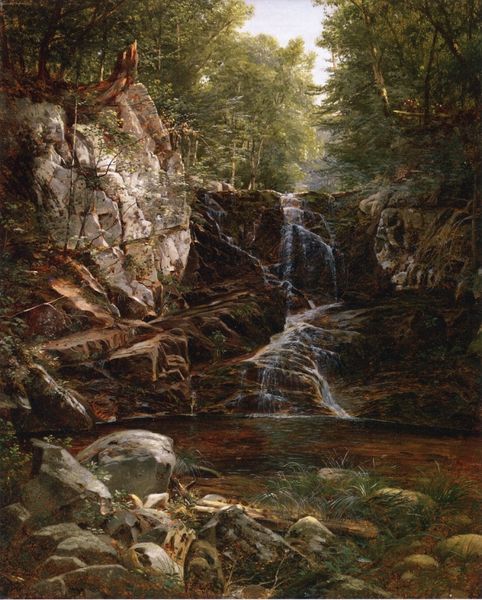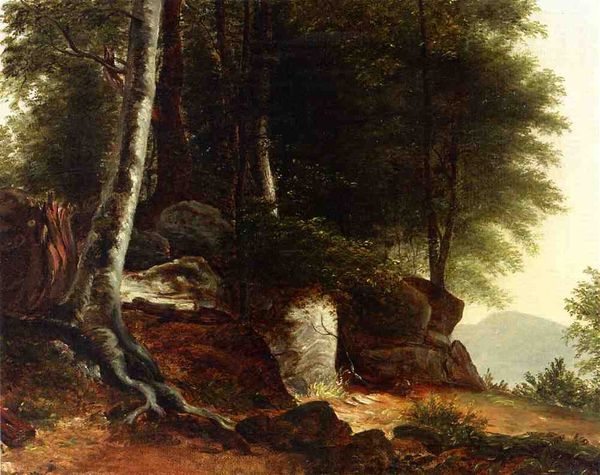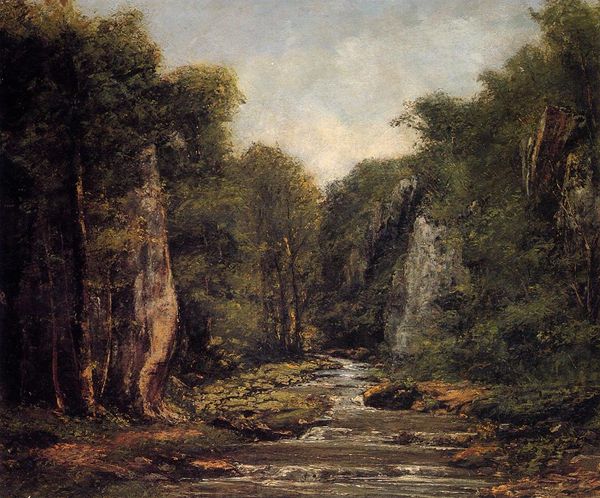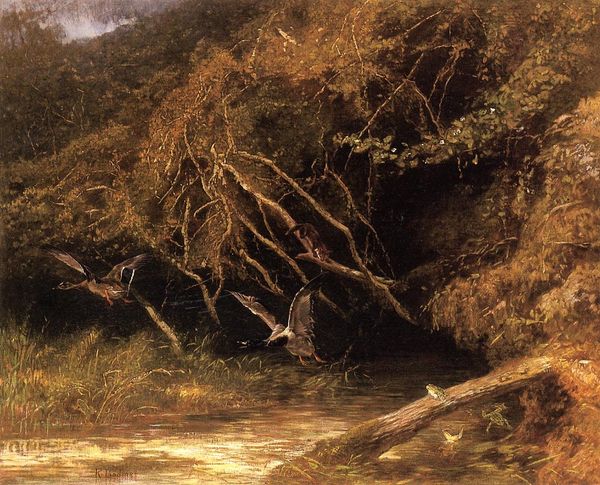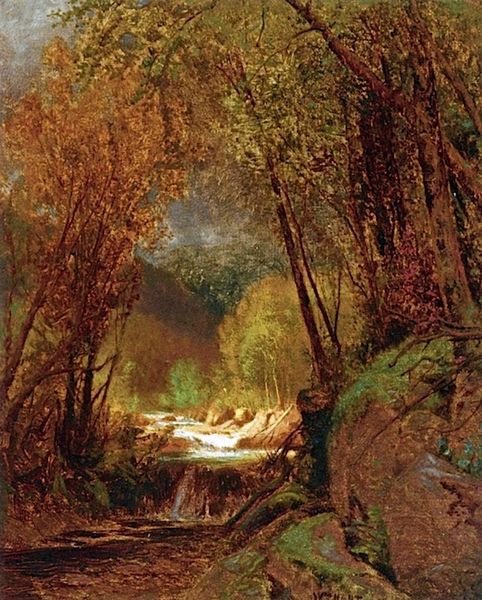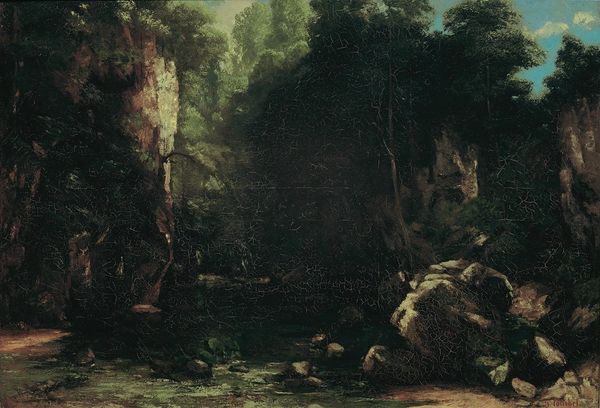
painting, oil-paint
#
tree
#
sky
#
cliff
#
painting
#
oil-paint
#
landscape
#
impressionist landscape
#
possibly oil pastel
#
oil painting
#
rock
#
forest
#
romanticism
#
natural-landscape
#
men
#
nature
#
watercolor
#
realism
Dimensions: 21.6 x 31.1 cm
Copyright: Public domain
Editor: We’re looking at Théodore Rousseau’s “Mountain Stream in Auvergne,” painted around 1830. It's an oil painting, and the first thing that strikes me is how it uses these dense, dark colors to create a feeling of intimacy, like you're stepping into a hidden place in the forest. What do you see in this piece? Curator: I see a romantic idealization of nature, of course, but also a subtle commentary on the socio-political landscape of 19th-century France. How might this seemingly straightforward landscape also function as a site of resistance, especially during a period of increasing industrialization and urbanization? Rousseau was part of the Barbizon School, which reacted against academic painting by turning to direct observation of nature. Editor: Resistance, how so? Curator: Think about it. During this period, land was being enclosed, and traditional ways of life were disappearing. By depicting this untouched, wild landscape, Rousseau is making a statement about the value of preserving the natural world. Moreover, it valorizes rural existence at a moment when power was increasingly centralized. Consider who had access to such unspoiled landscapes and who was excluded. Doesn't this raise important questions about access, privilege, and environmental justice? Editor: That’s a perspective I hadn’t considered before. I was mostly just reacting to the beauty of the scene itself! So, it's less about escaping *to* nature and more about acknowledging its socio-political significance. Curator: Precisely. It’s not just a pretty picture. It’s a claim about how we value nature and who benefits from its existence. It implicitly asks us to consider who has the power to define "nature" and who is displaced by its idealization. Editor: I see the painting in a new light now. Thanks for pointing that out! Curator: My pleasure. Remember, art always exists within a complex web of power relations. By understanding these dynamics, we can engage with art on a much deeper level.
Comments
No comments
Be the first to comment and join the conversation on the ultimate creative platform.
